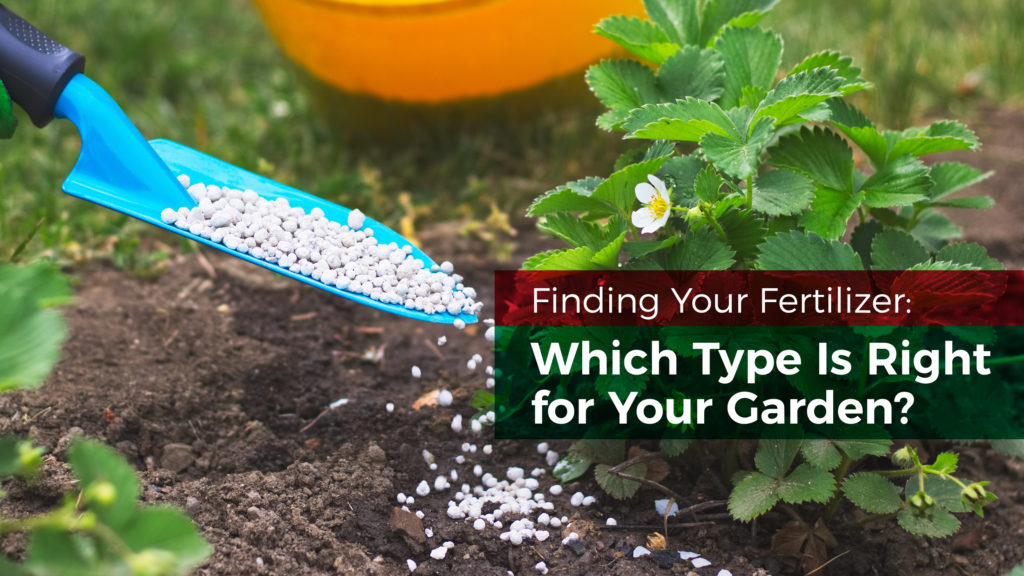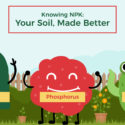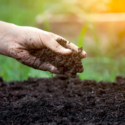Like how we take vitamins to supplement our daily diets, fertilizers ensure plants are retaining their proper amount of essential nutrients, too. For plants, these necessary elements include nitrogen, phosphorus, and potassium (NPK). Each of these can be found in soil naturally, yet whether it be because of geography, weather, or other factors, it is rare for your backyard soil to be in the optimal condition for plant growth.
That’s where fertilizer comes in. Fertilizer helps struggling soil by providing the nutrients that promote greenness and growth. And with several different types of fertilizers, you’re given the freedom to choose the delivery method that works best for both you and your garden.
Granular Fertilizer
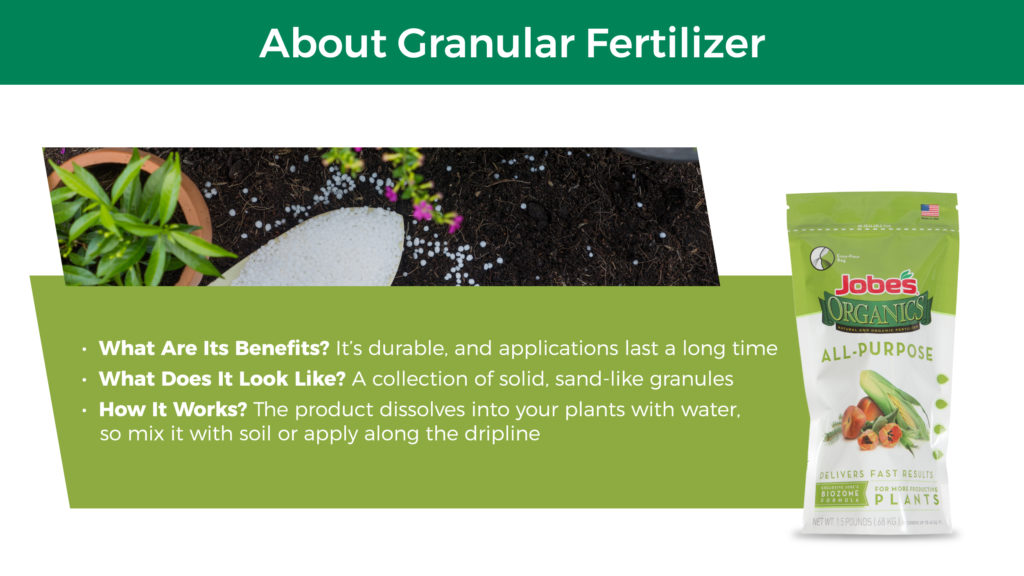
The benefits of granular fertilizer are that it’s durable and long-lasting. It looks like a collection of sand-like granules that dissolve into plants with water.
Granular fertilizer is named for its sand-like granules method of delivery. With an individual nutrient mix packed into each solid particle, granular fertilizer’s advantage relates to its longevity. This form of fertilizer needs time to break down before the plants are able to access their nutrients, which ultimately equates to fewer applications on your end. It’s like a time-release pill, one application will last you much longer. Most granular fertilizers only need to be reapplied monthly, and while it’s not suited for a quick fix, its water-insoluble nutrients promote more even, long-term growth. Granular fertilizer is also:
- Easy to control. Since this fertilizer is in a solid form, you can see precisely how much you are dispensing throughout your garden.
- Simple to store. Unlike liquid fertilizers, granular doesn’t settle over time and isn’t affected by cold weather.
- Cost effective. When conducting large pre-plant applications, granular fertilizer will give you the best bang for your buck.
Granular fertilizer can be added to the soil for seeds, trees, and everything in between. For seeds and new plantings, the fertilizer is best applied by mixing it with the soil prior to planting. For established shrubs, trees, and other plants, sprinkling the granules at the dripline works just as well. The dripline refers to the imaginary circle on the ground directly below the outer rim of the plant’s branches. Sprinkling here will ensure the nutrients receive enough moisture to properly dissolve and feed the plant.
All granulars needs are time, moisture, and a little bit of patience to make your garden bright and blooming again.
Liquid Fertilizer
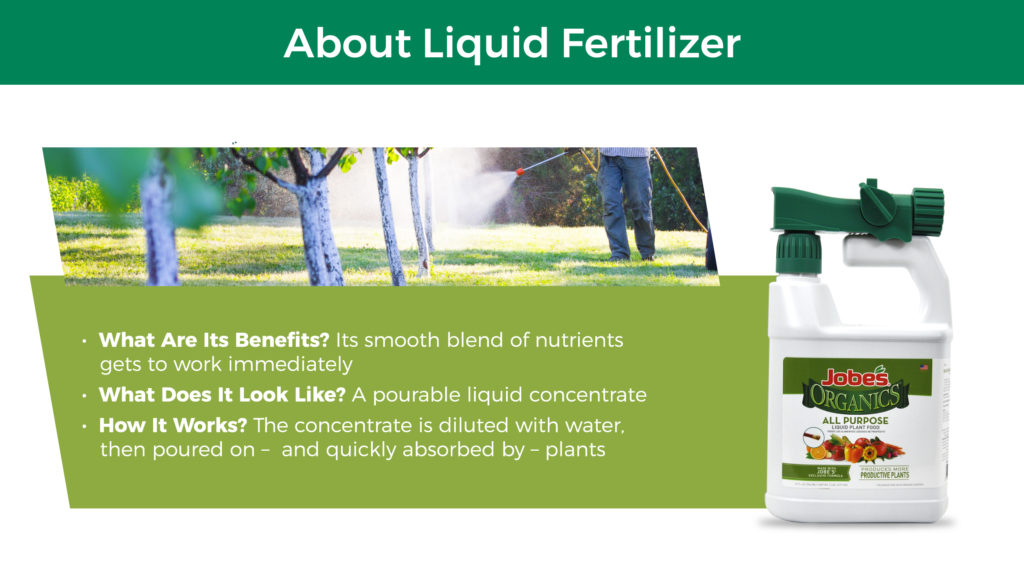
Liquid fertilizer provides a smooth blend of nutrients that is immediately absorbed by the plant. It is a pour-able version of fertilizer and is applied with a dilution of water.
Sometimes your garden really just needs a quick fix. In this case, liquid fertilizers offer a speedy solution to get plants green and growing. The nutrients typically come in a liquid concentrate that you dilute in water, and since the nutrients are already dissolved, they can be rapidly absorbed by the leaves and roots. For easy application, liquid fertilizer can be dispensed by either a watering can or a hose-end applicator. Liquid fertilizer is also:
- Easy to handle. Liquid fertilizer doesn’t require you to get down and dirty with the soil. It’s relatively simple as long as you can keep up with the more frequent applications for sustainable results.
- Versatile. As a homogeneous blend, this type of fertilizer ensures consistent proportions of nutrients for all of your plants.
Fertilizer Spikes
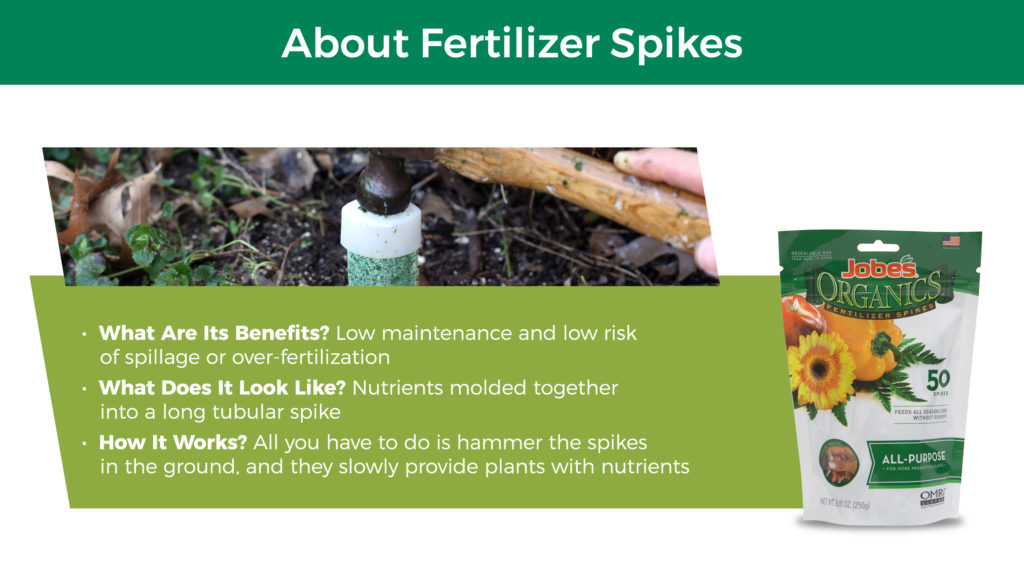
Fertilizer spikes are low-maintenance ways to fertilize as they are pre-measured and -portioned. You must simply hammer the spikes into the ground, and they’ll provide a steady stream of nutrients for plants.
If you’re looking for a low maintenance approach, garden fertilizer spikes may be the way to go. Spikes are a solid form of fertilizer that can be pushed into the soil to slowly dispense nutrients over time. They are designed to be long-lasting, so, for most plants, you only need to reapply them twice a year. This approach allows you to relinquish control over your garden and spend time on other aspects of your home. Further benefits include:
- They’re low risk. With fertilizer spikes, you don’t have to worry about accidentally using a heavy hand, and over-fertilization becomes a non-issue.
- Spikes prevent waste. Since spikes are driven into the ground, there’s no chance of spillage or run-off after a rainy day.
When driving fertilizer spikes into the soil, it is recommended to insert them either two feet from the base of the plant or at the dripline. It is also wise to maintain a three-foot distance between fertilizer spikes to ensure the nutrients are equally distributed to the roots.
When to Apply Fertilizer
As a rule of thumb, most plants absorb nutrients during their growing season. Plants require very little to survive while dormant. Generally, it is best to start applying in early spring right as they break dormancy and stop at the first frost in the fall.
Since granulars need moisture to settle into the soil, it is the most beneficial to sprinkle them around the time of a good rain. A rainy day will assist the fertilization process by naturally pushing the nutrients down, where the roots can access them. On the other hand, liquid fertilizer should be applied on dry days early in the morning to ensure that the leaves have enough time to absorb the nutrients while the sun is still up. Finally, to save yourself some effort, fertilizer spikes are the easiest to apply when the soil is soft and moist.
For frequency and necessary amounts, you should always follow the package’s instructions.
Different Plants, Different Fertilizer
When purchasing fertilizer, it is not uncommon to be faced with an overwhelming variety. Different plants require different NPK ratios, and since each element offers something unique, different combinations can yield better results. Nitrogen is responsible for a plant’s growth and greenness. Phosphorus stimulates strong roots, fruiting, and flowering, and potassium aids the overall health of a plant.
From citrus trees to roses, all plants thrive in slightly different environments. Fertilizers are typically named according to the plant they’re created to nourish, so picking one based off the package’s picture is a relatively safe route to go. There are also general options that are formulated to equally include each nutrient and meet most plants’ needs.
Finding a Fertilizer
Regardless of your plant varieties, at Jobe’s, we offer a wide range of fertilizers including granulars, liquids, and fertilizer spikes. Our products can help your current soil better support your garden. With options in both organic and synthetic forms, you can trust Jobe’s line of high-quality fertilizer products that targets your garden goals today.
